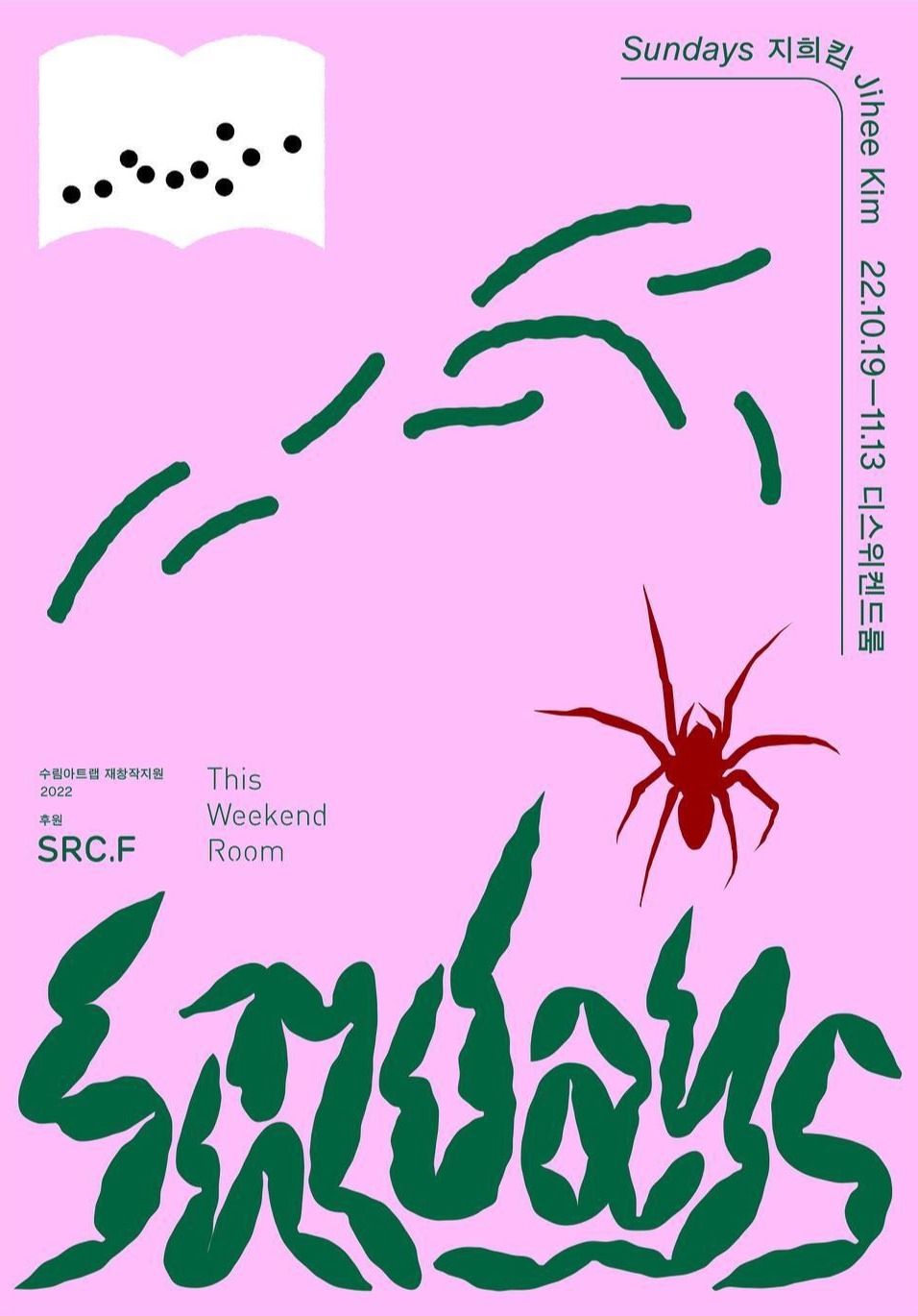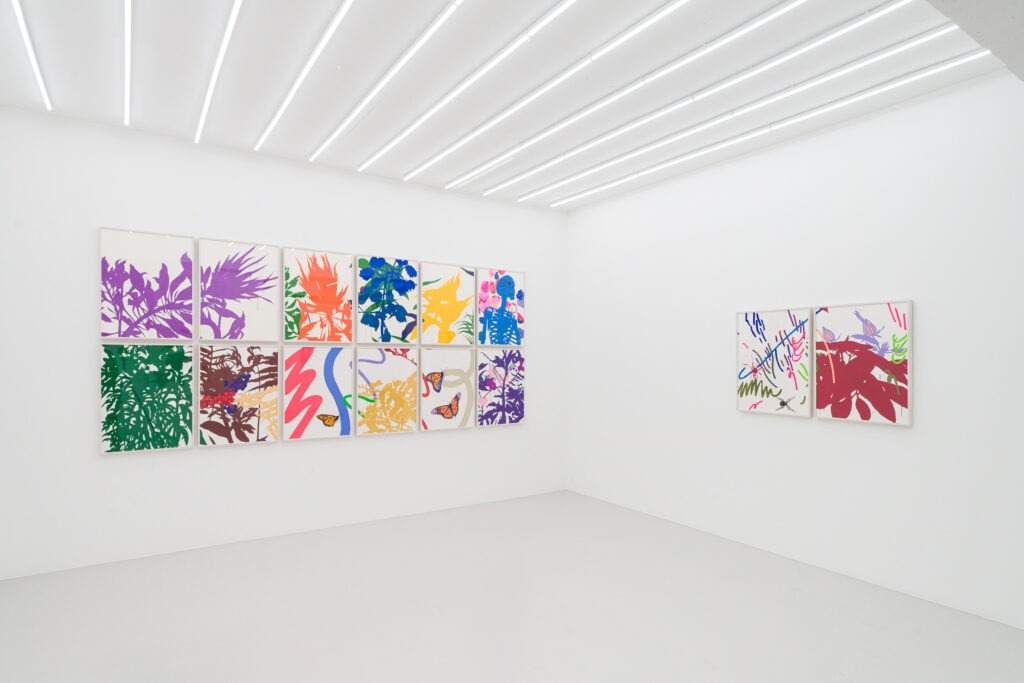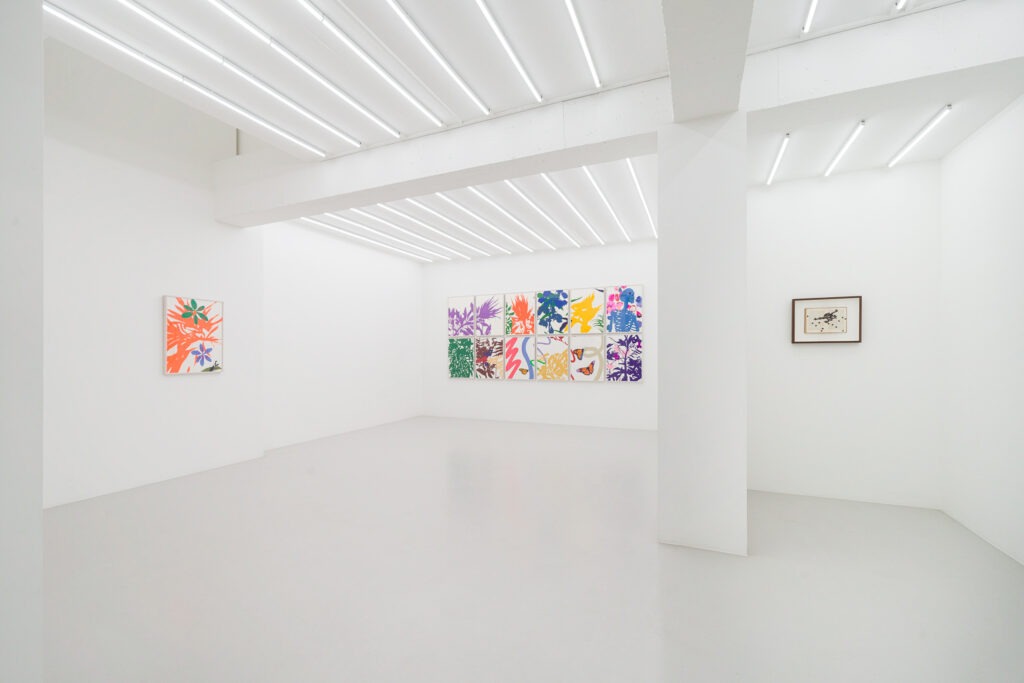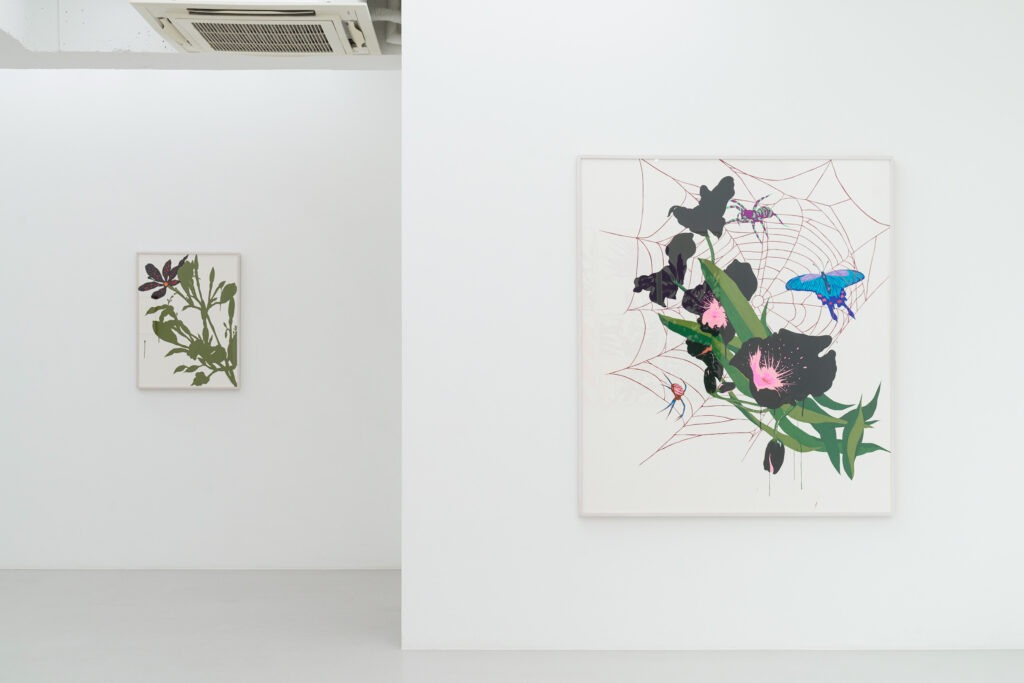
| Period| | 2022.10.19 - 2022.11.13 |
|---|---|
| Operating hours| | Wed-Sat 12:00 - 19:00 Sun 11:00 - 17:00 |
| Space| | This weekend room |
| Address| | 30, Hannam-daero 42-gil, Yongsan-gu, Seoul, Korea |
| Closed| | Mon, Tue |
| Price| | Free |
| Phone| | 070-8868-9120 |
| Web site| | 홈페이지 바로가기 |
| Artist| |
|
정보수정요청



|
|
Exhibition Information




If the Whole World were to be a Garden: While closely looking in to《Sundays》by JiheeKim A garden and a personal library have many things in common. The two are manmade and people have embraced them as part of life while decorating and maintaining the spaces. Interestingly, these spaces always bear contexts that go beyond our scope of perception. For example, a personal library is not a space where multiple books are simply gathered as a mere object. Rather, it hides personal secrets or stories that reflect characteristics of the owner. Also, a garden appears to be a place where part of nature such as flowers, trees, bugs, and birds simply stay. However, the truth is, countless birth and death as well as collision and connection that could not be detected with our bear eyes are concealed within the place. The two spaces offer a conceptual and symbolic background for《Sundays》by Jihee Kim and become a preemptive tool, so that Kim could pursue variations in narratives on a freer ground. Her works focused mainly on lifting the boundaries of the customary concepts in the society that surround people and seeking a possibility of new discourses in-between. For a long time, her works had appeared to be firmly tied to esthetic and philosophical languages that cope with critical awareness on issues that were inferred from her personal experiences – such as a social stereotype on gender, rebellious corporality, and identities that blur boundaries. On the contrary, her recent works attempt to actively build a passage between a definite space of ‘oneself’ and multiple perspectives that reside outside of that space. This change can be seen both in an intrinsic thinking process of absorbing the world with her own perspectives and an extrinsic process of representing actual images. To do so, the artist has imagined daily lives of ‘someone’ who could exists, or she might have created, and then she put it in sentences. It is like a secretive and exciting experience of groping the overgrown garden to go on a treasure hunt, looking for gems that might be hidden in there. Kim puts out multiple variations of emotions and decorates her canvas while imperfectly passing the times which penetrate them. At the entrance of the viewing room, multiple unfolded books with drawings that Kim painted on are displayed. Book drawing series is a painting that the artist draws on randomly donated books and, the beginning of this work, by its nature, must rely on others. It can be uttered only on the assumption of other’s participation and attention, and it is like a journey to an unknown place, beginning with unexpected forms and contents of the books. Kim willingly accepts these adventures and continues the experiment by connecting oneself with countless others without being bounded by formality. What’s interesting is that Kim does not consider these texts in randomly selected books as inevitable conditions for communication nor semantic interpretation. The given signifier has been sufficiently liberated from existing meanings and a pure background where narratives created by next users can penetrate. As mentioned earlier, making a place where it is more open to subjects escaped from the existing network of meanings such as objects, human, and a form of nature has been a focal point in sustaining her works. For example, the books from all over the world could be random worlds and memories of others and latent possibility to Kim where she can build up layers of subjective contemplation. Hues and their shades that are generated when existing texts are covered reflect emotional waves various in size that ‘someone’ Kim thought of might have felt. However, interestingly enough, no hues were given to discursively scattered figures such as cats, butterflies, octopus, chandeliers and cherries. This seems to show Kim’s sensitive and caring attitude that while putting daily lives of others on the same level of that of hers, she tries to avoid misinterpreting or dismissing their territories them as a single voice and making hasty errors by objectifying them. In the meantime, viewers could experience a boundless visual and conceptual stroll while going back and forth between figures of objects suggested by the artist and texts that are written by someone else. Active reading of symbols produces sensory experience in the present by linking the past with uniqueness of the time and space they connect, instead of accepting given information as it is. Kim’s book drawing series encourages viewers to carry on this practical process between the text and image. When viewers walk past the personal library where small-sized black-and-white drawings are hanging and go down the staircase toward the hidden room, they will encounter a garden surrounded with bursting colors. Grasses and flowers painted with strong colors that show a stark contrast against simple outlines will catch viewers’ eyes. Rare plants that Kim saw in a botanical garden near her studio were reborn as these figures which have become subjects for a playful exploration. Each canvas was formed individually, but at the same time, it connects with other canvases, thereby linking disconnected times. As if they completely disregard the edges of canvases that are separated by the frames, flowers, and grasses with vitality thickly stretch out their stems and leaves, in and out of the canvases. Unknown creatures appear to vividly spread atypical energy just like ever-changing shadows with time. Also, butterflies on the plants, fluids dropping from the leaves, skeletons and spiders transform the garden which appears to be a mystical and beautiful place into the one where threats and tension coexist. If we take a closer look, we could recognize that each plant that forms the garden has various adjectives that explain states of our minds as its name. Kim attempts to show the characteristics of the elements in the garden through an implicit medium that represents the inner side of each individual. Solitude, bitterness, and times that bring you outburst of rage and exultation sometimes are pieces of emotions that are universal. Kim detects conflicting branches of senses that are mixed into our chaotic life and brings them to a garden, a space of nature that is artificially created. Sensing the vibration of subtle psychologies and sympathizing with them are like watering plants that are just sprouting, trimming full-grown grasses, and enjoying fragrant flowers in their full bloom. The artist invites viewers to an unacquainted scene created when a pallet of primal senses that human beings have overlap. What we can newly find out after setting aside existing rhetoric, which is used to represent Kim’s works, was a spectrum of emotions that is more fundamental and universal. She carefully pulls out nonverbal reactions which are located at the very bottom of our body, an exterior shell. Humans are always imperfect, capricious, and fragile. A minor shock could push our body over to the edge of limit and the body, which is only ephemeral, could wither in no time. External forces could easily alter our mind as well, and it is very tricky to predict the state of the mind. However, nonverbal and unvisualized aspects of emotional reactions drive us to positively perceive and desire our own life. As such, Kim astutely observes the flow of energy that was obtained while people interact with reality and transforms her observation into substantial forms. Times that she collects books read by people she does not know and continuously unfolds unrealistic scenes while imagining ‘someone’ and their weekends that she could meet someday are her own way of affectionately embracing the world. While feeling vitality, love and energy that fill the library and the garden that Kim is tending, I am intrigued, once again, by the story about everyone that she is writing somewhere at this very moment. Jihyung Park (Curator, ThisWeekendRoom) Translated by Habin Yang * Korean-English Translation of this book is supported by Ministry of Culture, Sports and Tourism and Korea Arts Management Service. (Source = thisweekendroom)
